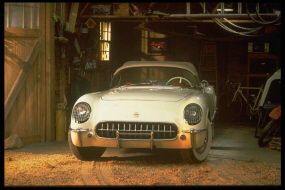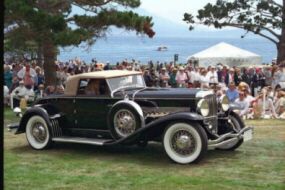
The Future Always Looks
Faster
San Francisco:
There's no record of people making predictions about "the horse of the future",
but it seems that automotive fortune-telling was born the day after the first primitive
car rolled out of its inventor's barn.
Click Below for Full Article
 Automotive Predictions for the Year 2000 Automotive Predictions for the Year 2000

Classic Cars and
How They Got That Way
San Francisco:
Americans have always been curious about older automobiles, but the current passion for
collecting and restoring cars as a hobby dates only from World War II. Even then, most
collectors seemed to want only two types of car: Model T or Model A Fords, and the heavy
cars as they are now referred to by classic car connoisseurs--the exotic machines called
Bugatti, Cadillac, Cord, Duesenberg, Packard et al. And even among these heavies,
collectors thought only specific models of these worthy of salvation. Many a car magazine
from the late 1940s and early 50s shows ads of old 1920s Packards and Pierce-Arrows cut
into convertibles or converted into tow trucks and funky RVs. But most of the pre-war
dinosaurs still lying around just prior to and after the war were relegated to the scrap
heap. A few fortunate ones, like Ford or Chevy three- window coupes of roadsters from the
'30s, fell into the hands of California hot-rodders and customizers. This attitude of
neglect, if not downright disrespect, of venerable cars persisted well into the 1960s.
While there were a few instant classics, (a rather contradictory term if you think about
it), such as the 1953 Corvette and the 1955 Thunderbird, by and large car lovers were
yearning for the hopeful future, not the terrible past. Few wanted to be seen in an old
car.
Click Below for Full Article
 Classic Cars and How They Got That Way Classic Cars and How They Got That Way

|
